Reviews
Fliegers Under the Radar
These watches also feature anti-magnetic seals to increase reliability and crystal technology for pressure drops. While designed for flight, water resistance is important for the potential of water landings. For similar reasons, it’s important for the movements of pilot’s watches to be anti-shock, and their dials to be protected by anti-glare technology and shatter-proof sapphire crystal.
From the simplest timekeeping tool in minimal and legible dial to the most elaborate complications, there are pilot’s watches to meet any aesthetic taste. The symbolism of humanity’s far-reaching ambitions to conquer the sky and the innovation of the tools required to continue pushing the limits make a pilot’s watch highly collectable.
Sinn EZM 10 Pilot Chronograph
In 1994, at the age of 80, Helmut Sinn decided to retire and sell Sinn watch company to Lothar Schmidt. Mr Schmidt, an engineer by nature, evolved Sinn into a technological leader within the watch industry. One such great example of Sinn engineering is the EZM 10 TESTAF Pilot Chronograph. This mission timer meets the strict requirements for pilots operating under visual flight rules (VFR) and instrument flight rules (IFR).
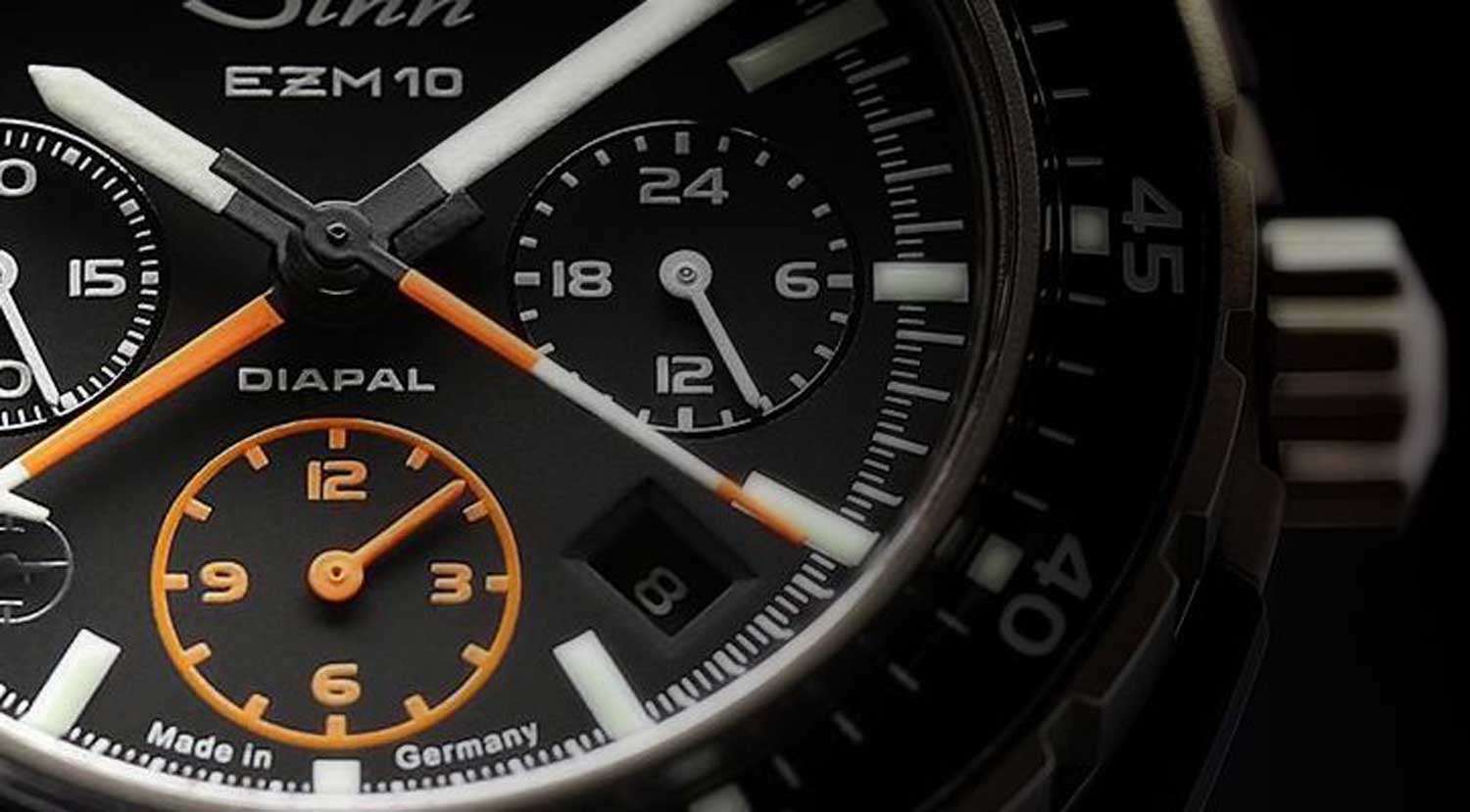
The EZM 10 Pilot Chronograph comes with a certificate of Technical Standard for Pilot Watches and is qualified for professional use to the highest level.
The EZM 10 is 44mm in diameter and 15.6mm in height, and weighs 95g (without strap) with a bead-blasted titanium case. The case is treated with Sinn’s proprietary Tegiment technology, essentially a process that raises the hardness level of the case material, making it virtually scratch resistant. The bi-directional pilot’s bezel has a 60-click mechanism, and the bezel insert is made of sapphire crystal with luminescent numbers for greater visibility. The watch case and bezel are manufactured by Sächsische Uhrentechnologie Glashütte (SUG), a subsidiary of Sinn.
Sinn’s technology, known as the D3-System, has the crown and push-piece mounted directly to the case, providing reliable protection from lateral knocks and the penetration of dust or moisture. The pushers are coated with PVD with Tegiment treatment, mostly to provide the case a uniform appearance. With the combination of the D3-System and a screw-down crown, the chronograph achieves a depth rating of 200 metres.
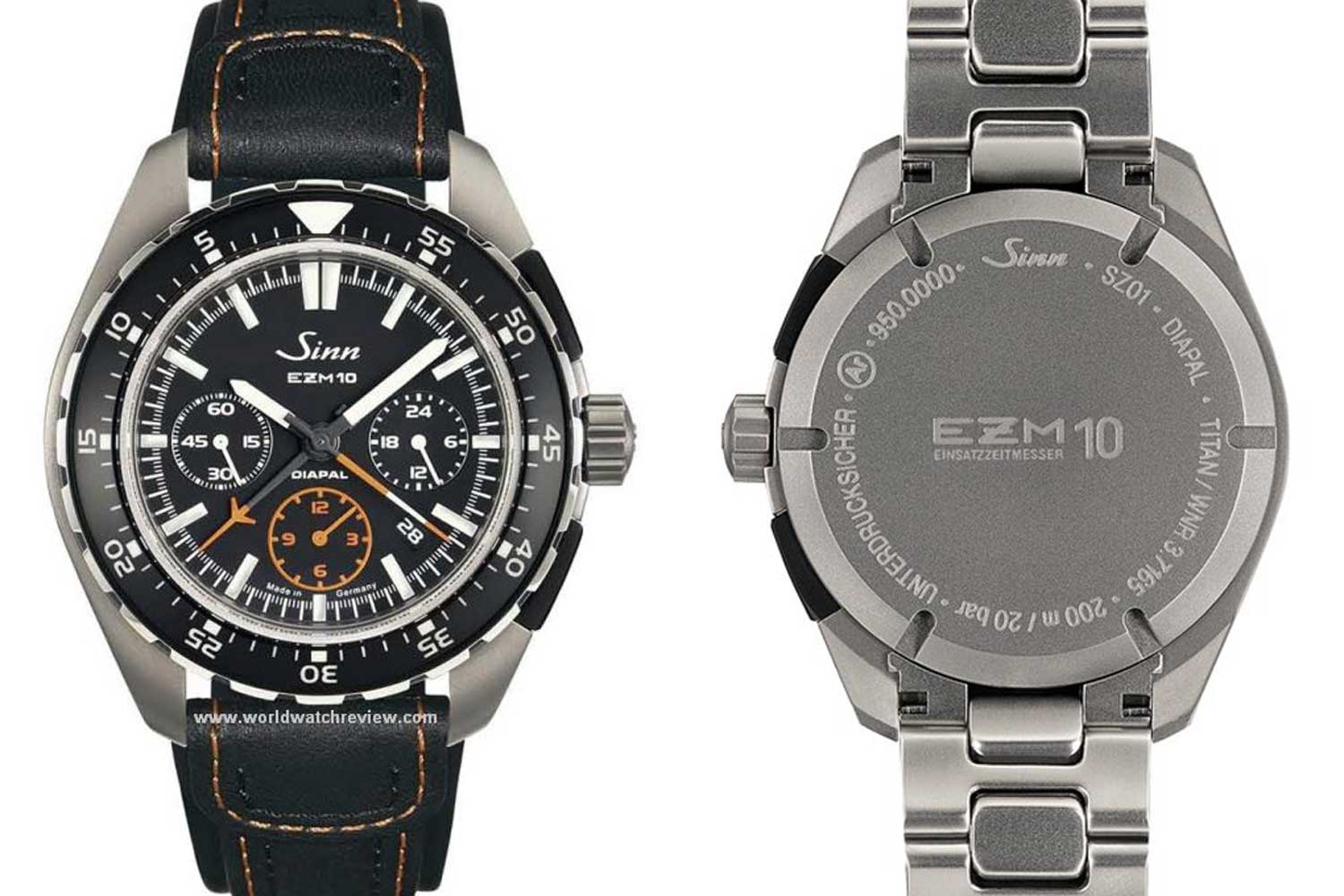
To ensure reliable protection from lateral knocks, Sinn uses its D3-System technology to mount the crown and push-piece directly to the watch case.
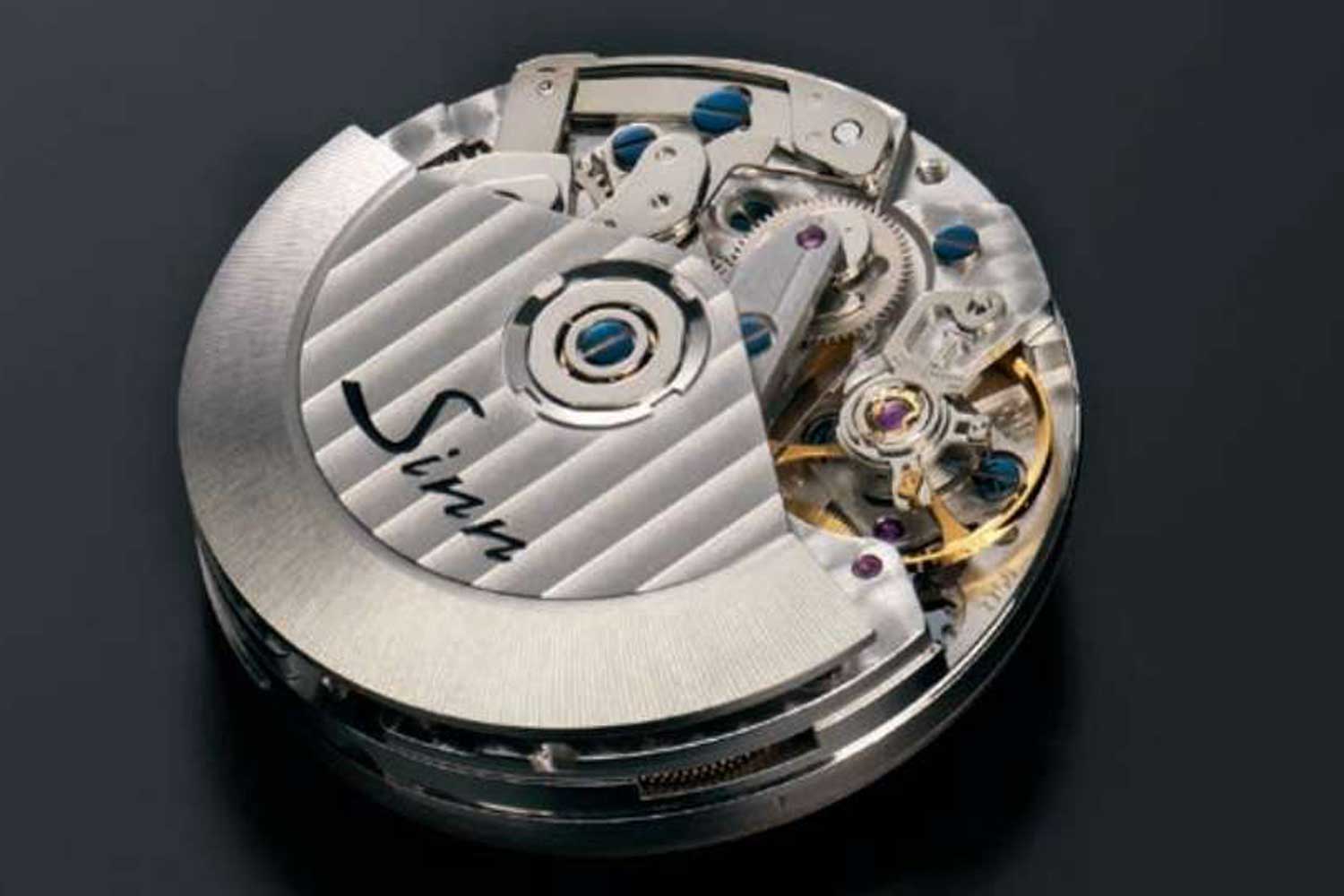
The SZ01 movement was designed in a way to replicate the functionality of Lemania 5100
Retail Price: USD 5,680
Guinand Starfighter Pilot Chronograph
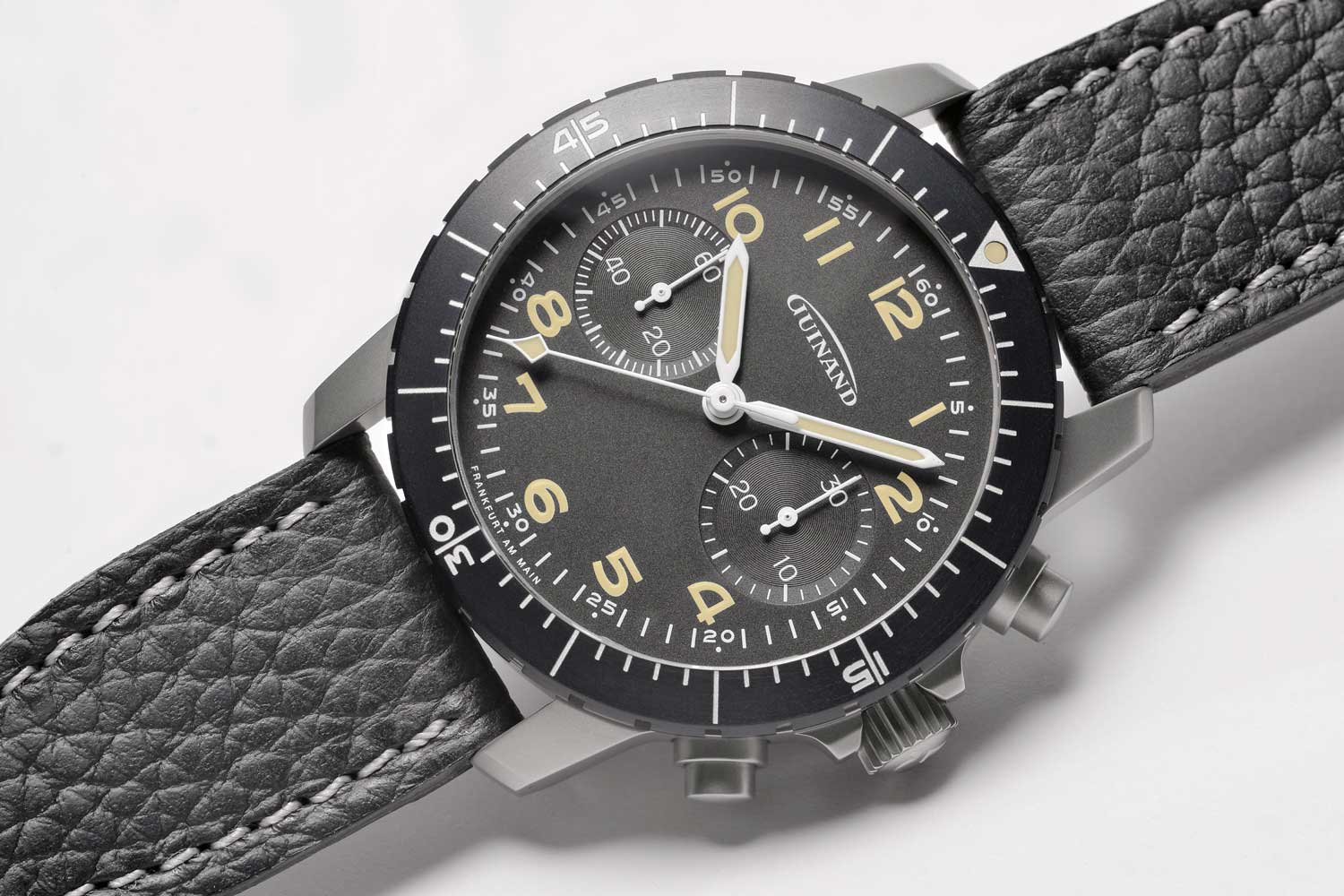
The Starfighter Pilot Chronograph was named after the Mach 2-capable F-104 Starfighters, also known by the Luftwaffe as the “Widow Maker”.
In 2015, Matthias Klueh, an electrical engineer by profession, purchased Guinand from Helmut Sinn. As he took stock of all the parts, he found a box of Heuer dials in the spare parts inventory. These dials fit perfectly into the Guinand’s 42.6mm pilot’s watch case. Mr Klueh decided to produce a replica of one of the bi-compax Heuer dials (there were many variations), and thus the Starfighter Pilot Chronograph was created as a tribute to the legendary 1960s Heuer Bundeswehr chronograph.
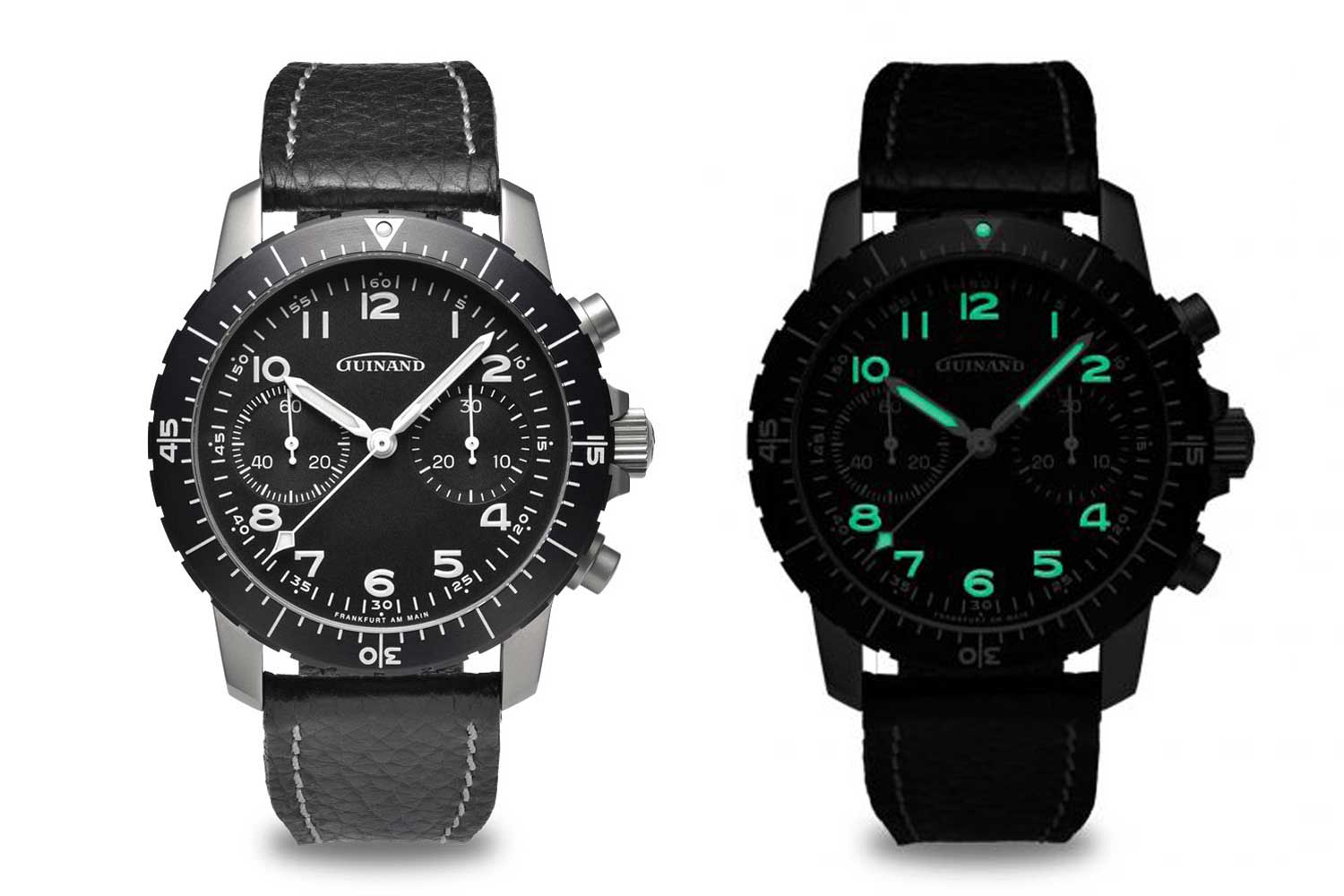
Inspired by the Heuer and Sinn Bundeswehr chronographs, the Guinand Starfighter blends historical design elements with modern features.
The Starfighter is 42.6mm in diameter and 15.6mm in height, and weighs 95g (without strap) with a bead-blasted stainless-steel case. The case is fitted with a bi-directional pilot’s aluminium bezel with luminescent pip inside the reference triangle. The domed sapphire crystal with anti-reflective coating on the inside provides optimal readability. With a screw-down crown that comes with flank protection, and double O-ring seal, the chronograph is water resistant up to 200 metres.
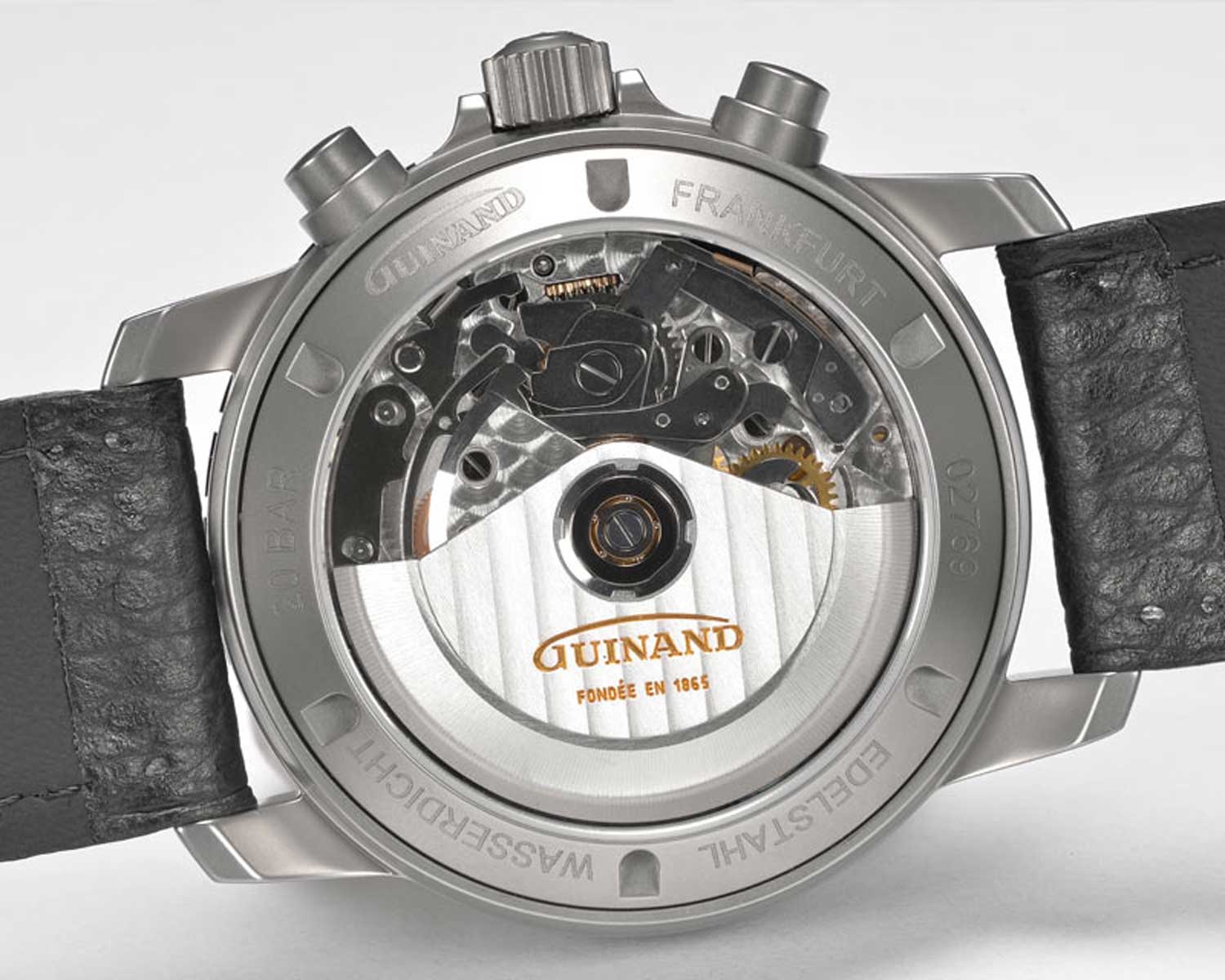
The watch is powered by the Sellita SW510 automatic chronograph movement with 30-minute counter subdial and central seconds.
Guinand selected the Sellita SW510 automatic chronograph movement with 30-minute counter subdial and central seconds. The Starfighter comes with a striking pilot’s style cowhide leather strap, made locally in the Frankfurt area.
Retail Price: Starting from EUR 1,949
Junghans Meister Pilot Chronoscope
Even though Junghans is best known for its Bauhaus Max Bill timepieces, it has a rich history of producing pilot’s chronographs for the German military. The Black Forest-based company produced the legendary calibre J88 chronograph from 1950 until the mid-’60s, and after supplying the watches to the Bundeswehr, it later sold them to the public. A combination of credible past and unique design elements lands the Meister Pilots securely on the list of flieger chronographs flying under the radar.
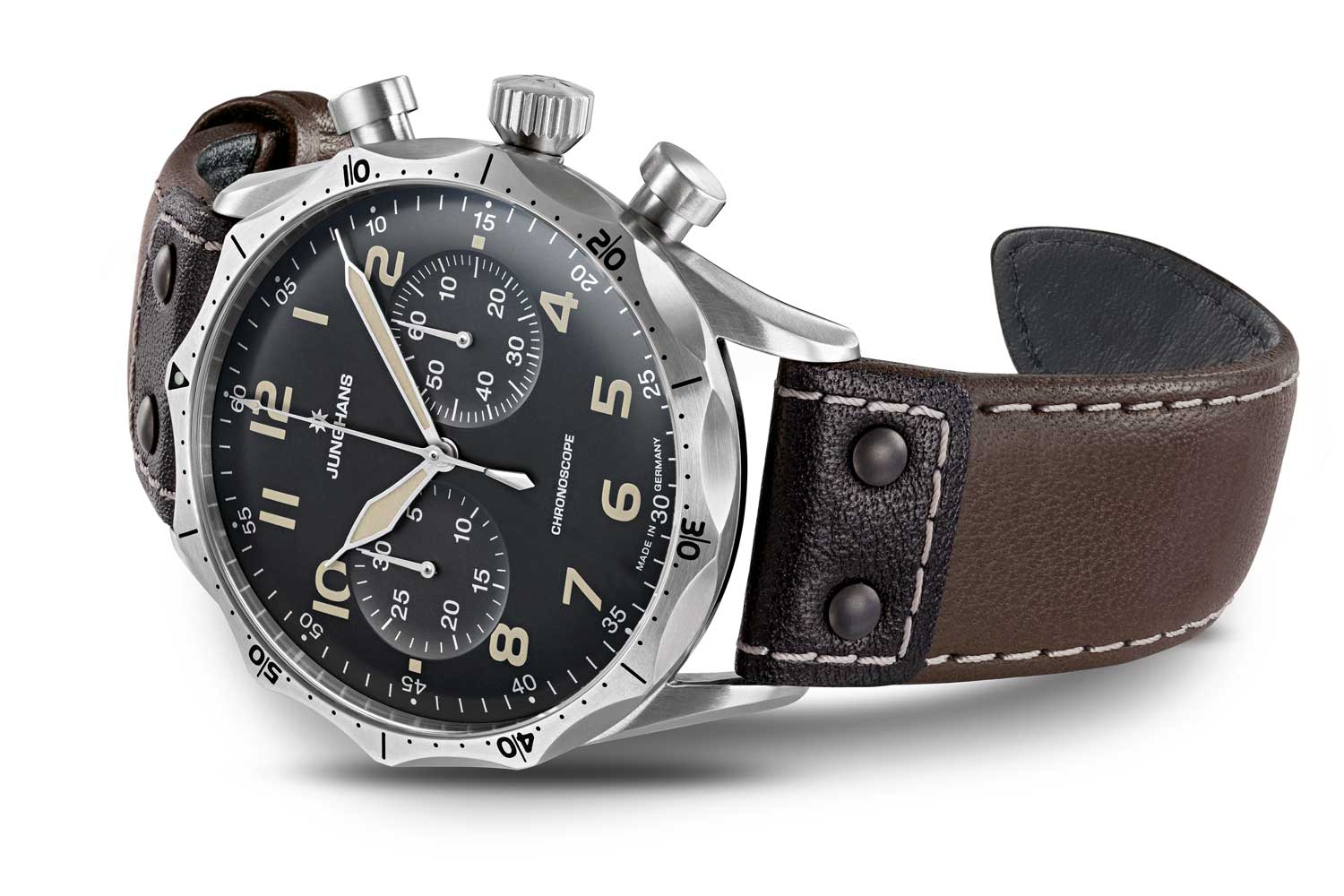
Meister Pilot Chronoscope has a bi-compax layout on a matte black dial with large recessed subdials and easy-to-read numbers in bold font.
The large 43.3mm steel case on Meister Pilot has the recognisable bi-directional rotating bezel that features 12 distinctive concave notches — referencing the J88 chronograph of the 1950s. Another distinct design element is the long oval-shaped chronograph pushers, a feature not seen very often on a pilot’s chronograph. The diamond-shaped crown is not screwed down; however, the pilot’s watch retains a respectable 100-metre water-resistance rating. The convex shape of the caseback and the curved lugs makes the sizable chronograph comfortable to wear.
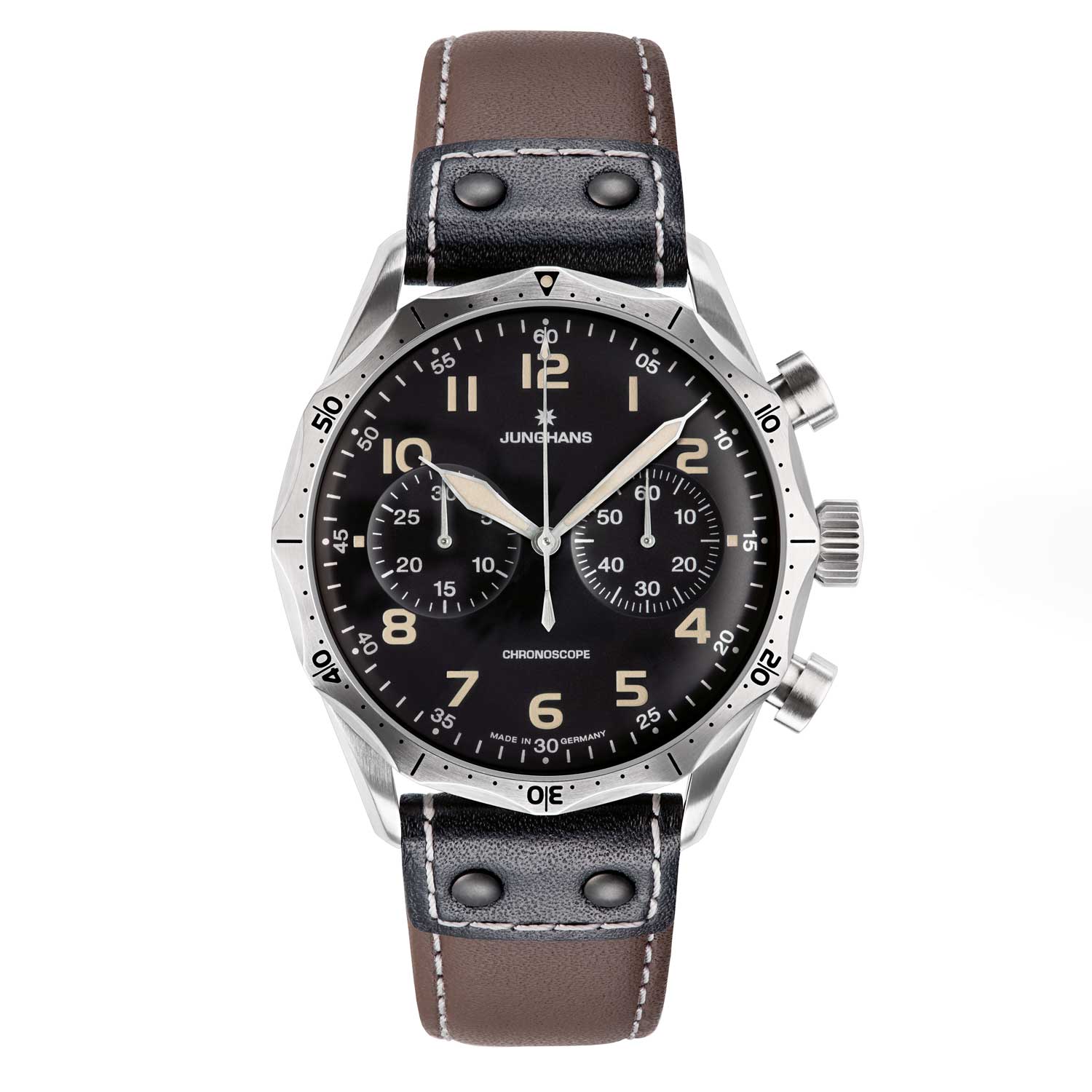
The watch is powered by an ETA 2824-2 or Sellita SW200-1 base automatic calibre with an additional Dubois-Dépraz 2030 chronograph module.
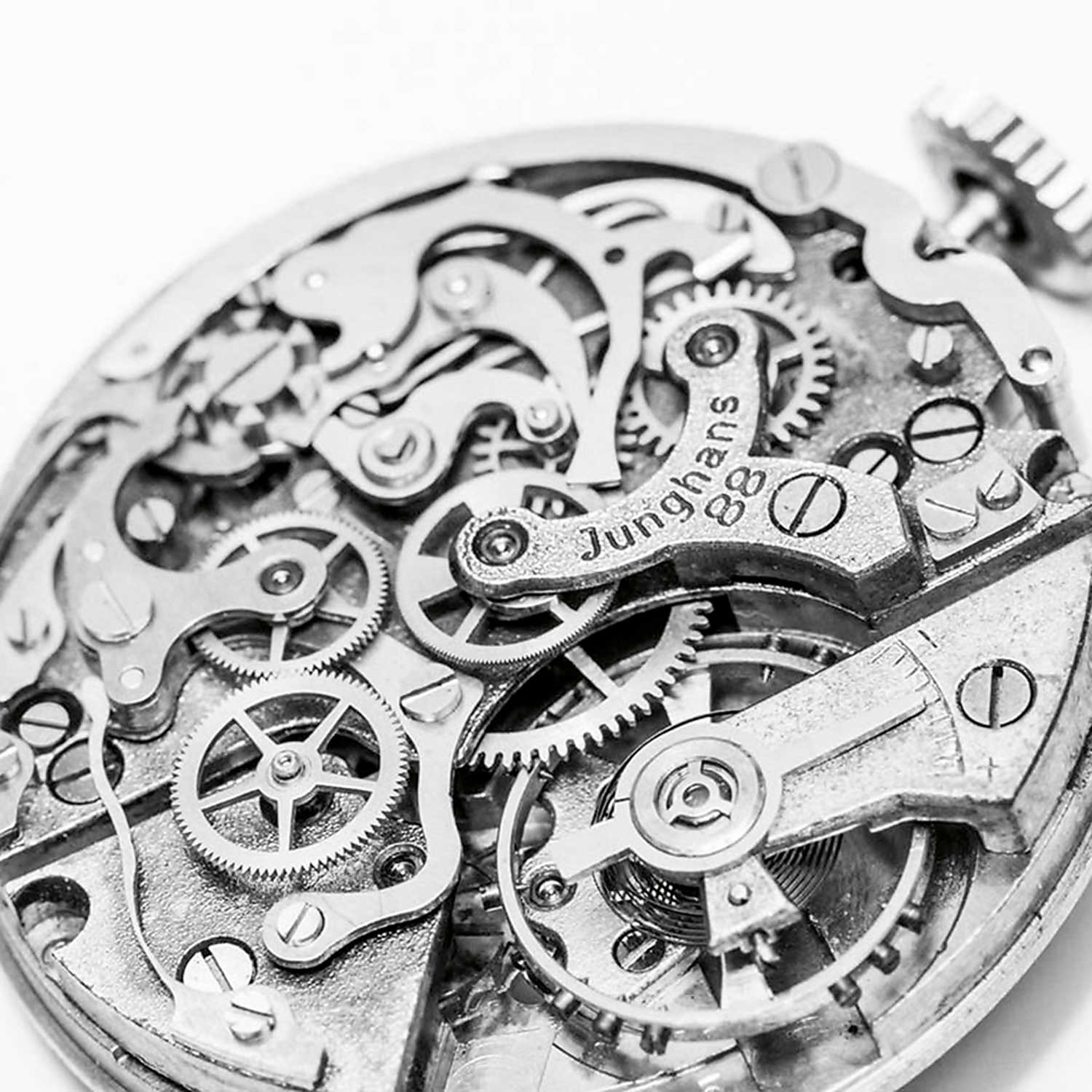
The watch is powered by an ETA 2824-2 or Sellita SW200-1 base automatic calibre with an additional Dubois-Dépraz 2030 chronograph module.
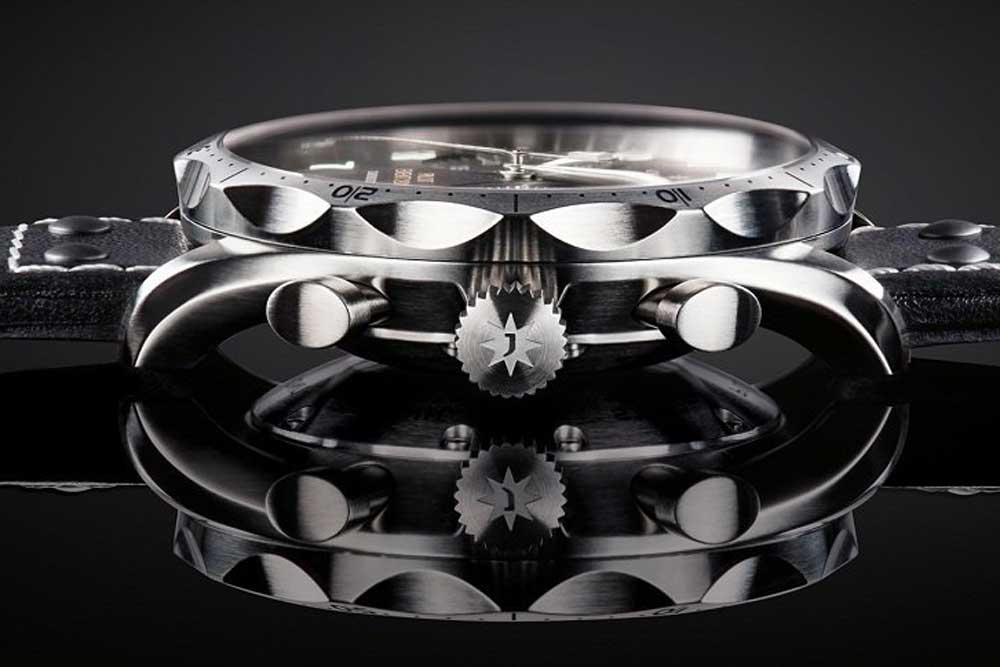
The dodecagonal bezel is unique to Junghans’ pilot’s watches.
The Meister Pilot Chronoscope is fitted with an ETA 2824-2 or Sellita SW200-1 base automatic calibre, with an additional Dubois-Dépraz 2030 chronograph module. The watch is accompanied by a tapered pilot’s style strap in calf leather with a solid steel pin buckle.
Retail Price: EUR 2,240
Tutima M2 Coastline Chronograph
The Tutima M2 Coastline Chronograph is a direct descendant of the 1980s NATO chronograph. Tutima reference 798 was issued to the German Air Force in 1983 under strict specifications by the German Armed Forces’ central procurement department. The following year, Tutima became an official supplier to the NATO Air Force; thereafter, the watch was referred to as the NATO chronograph.
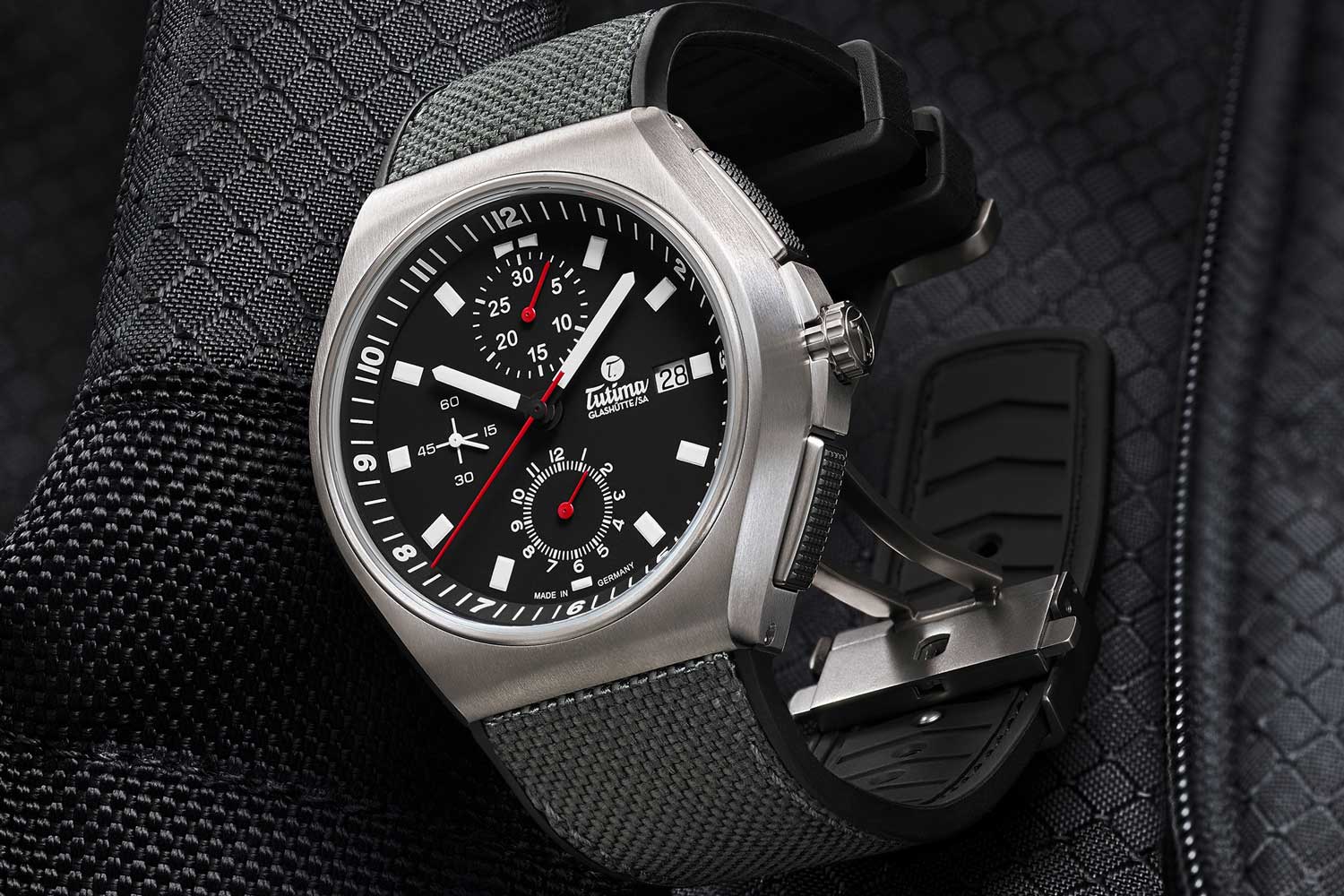
The M2 Coastline Chronograph is a direct descendant of the 1980s NATO chronograph.
The M2 Coastline operates on an ETA/Valjoux-based movement since Lemania was no longer an option, but then again civilian watches do not have the stringent requirement of withstanding 7G acceleration!
The M2 Coastline is housed in a 43mm brushed titanium case, staying true to the same size as the original NATO chronograph. Tutima made the worthwhile enhancement of updating the integrated chronograph pushers with grooved neoprene inlays. This makes operating the pushers much easier and prevents accidental engagement of the chronograph. The screw-down crown has protectors on either side, and the chronograph is water resistant up to 200 metres.
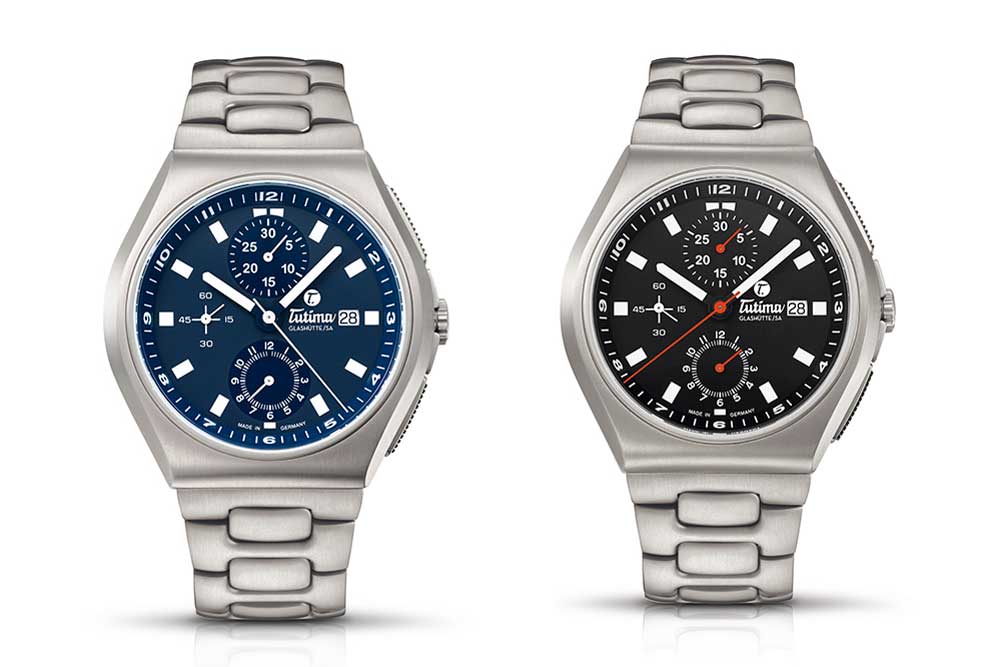
The watch is powered by a modified ETA/Valjoux 7750 with a central chronograph seconds hand, a 30-minute counter at 12 o’clock, and a 12-hour counter at six o’clock.
Retail Price: USD 3,300 on strap; USD 3,600 on titanium bracelet
Damasko DC57 Chronograph
Like Sinn, Damasko is the other German brand pushing the envelope of materials engineering in pilot’s chronographs. Damasko is a family-owned watch business based in Barbing, a small village close to Regensburg, in Germany.
Case, crown and pushers are designed, engineered and produced by Damasko in Barbing. The case is made of bead-blasted stainless steel and completely nickel-free. It is highly scratch resistant due to a special technique of hardening called “ice hardening” (ice-hardened to 60 HRC or 710 HV) which is patented by Damasko. The case is four times harder than any other steel currently used in the watch industry. There is also an integrated anti-magnetic inner cage, anti-magnetic to 80,000 A/m.
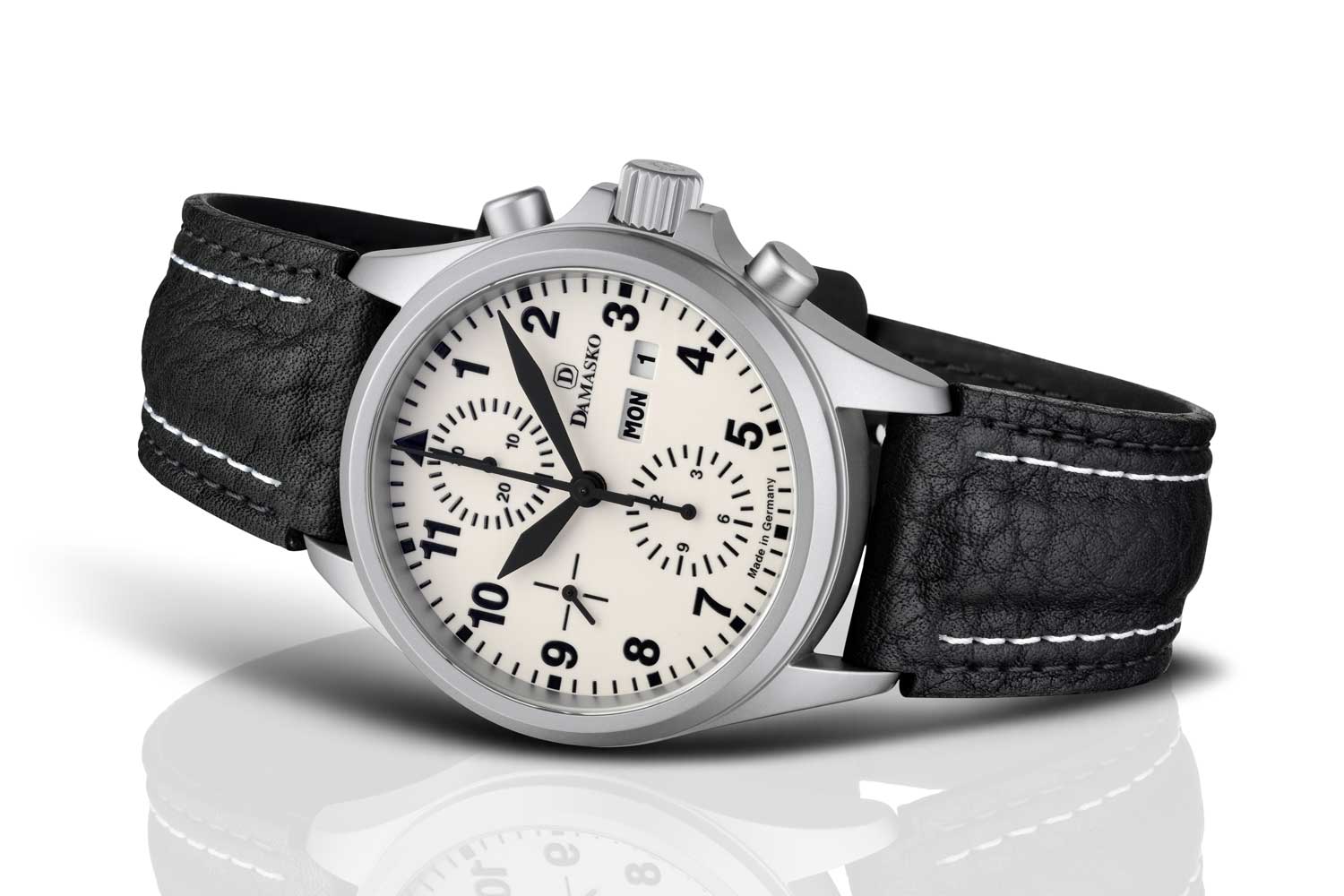
The DC57 Chronograph uses Damasko’s “ice hardening” technology for the case, which is four times harder than any other steel currently used in the watch industry.
The all-luminescent dial is coated with Super-LumiNova C1 white, and the numbers, markers, and the triangle at 12 o’clock are painted matte black. All the hands, including chronograph sub-counter hands, are painted in matte black. The crystal is a flat sapphire crystal with highly scratch-resistant anti-reflective coating on both the outside and the inside of the crystal.
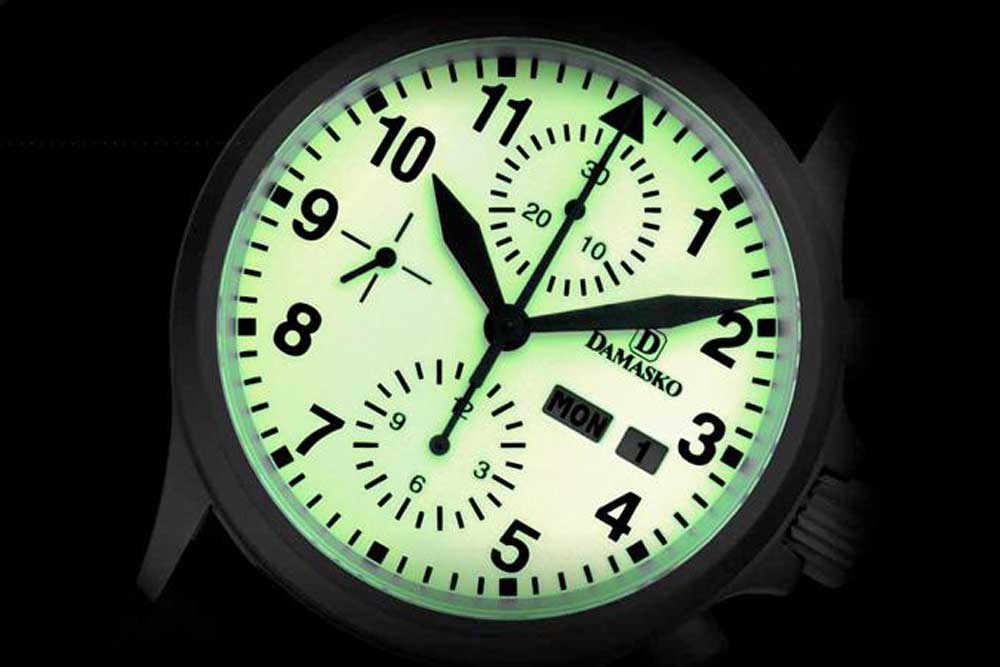
The all-luminescent dial is coated with Super-LumiNova C1 white, and the numbers, markers, and the triangle at 12 o’clock are painted matte black.
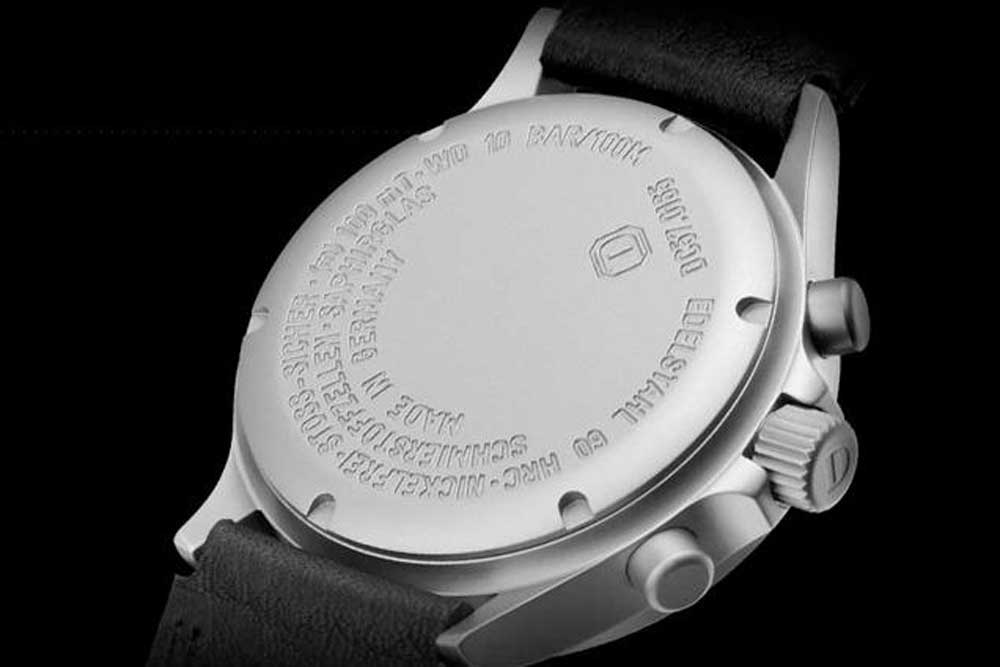
Powered by a Valjoux 7750 movement, the DC57 has a water-resistance rating of up to 100 metres.
Retail Price: EUR 2,070
Brellum Pilot Power Gauge Chronometer
Brellum is a relatively new Swiss microbrand, founded in 2016 and producing less than 300 watches per year. However, the brand has a distinct advantage in founder Sébastien Muller. He’s a fourth-generation horologist, coming from a line of watchmakers that can trace their work back to 1885 in Switzerland’s Jura region.
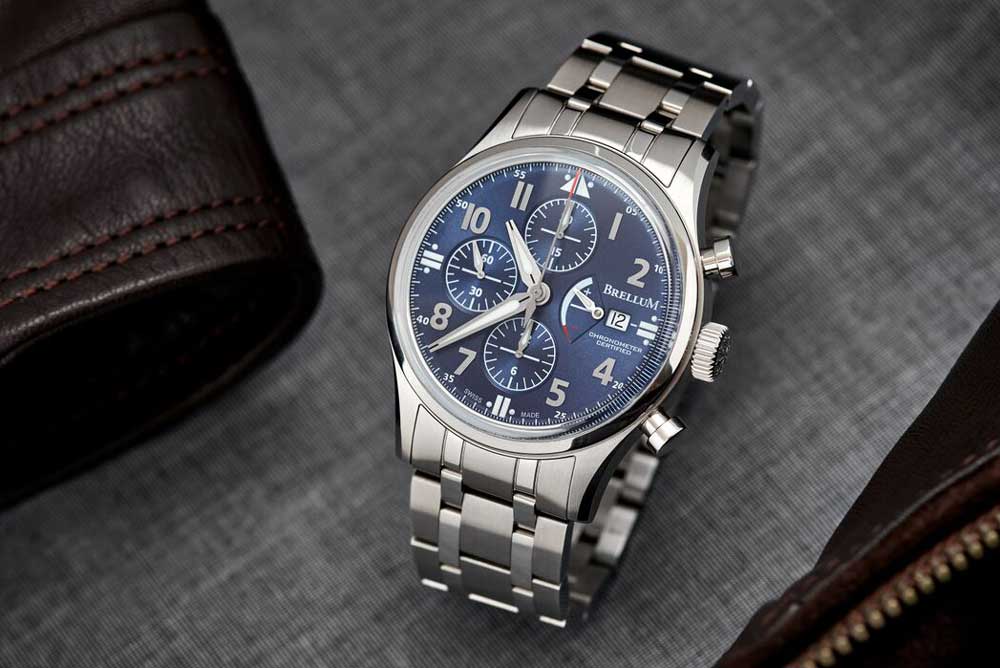
The Pilot Power Gauge Chronometer is a limited edition of 33 pieces, offered in three galvanic dials and decorated COSC-certified chronometer movement.
The limited edition release is available in 33 pieces and offered in three galvanic dials with a sunray pattern and decorated COSC-certified chronometer movement, offering a variety of aesthetic looks to satisfy any taste. The black dial is classically elegant, the silver dial offers a touch of sophistication, and the blue dial is on-trend and striking. The integrated stainless steel bracelet bears minimal polishing and a convenient deployant buckle. The handmade calf leather strap and pin buckle offers a daily wear option.
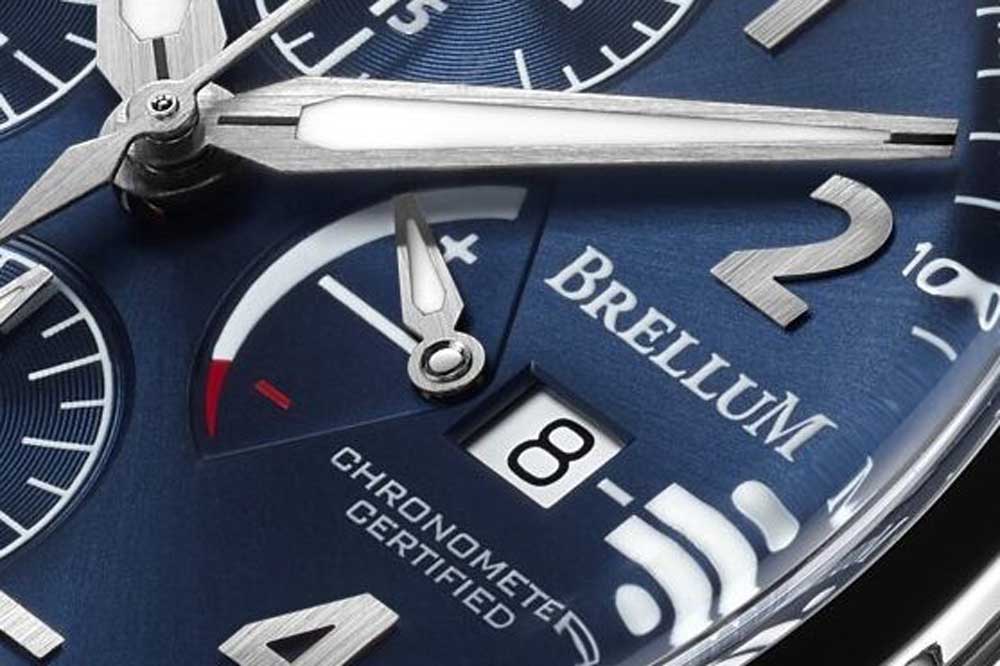
The watch features a date indicator at three o’clock and a gauge-like power-reserve indicator complete with a red warning zone on low power.
The chronograph layout of three subdials is associated with the underlying Valjoux 7750-based movement: a seconds hand at the nine o’clock position, a 60-seconds counter at 12 o’clock and a 12-hours counter at six o’clock. There is a date indicator at three o’clock and just inside this is a gauge-like power-reserve indicator complete with a red warning zone on low power.
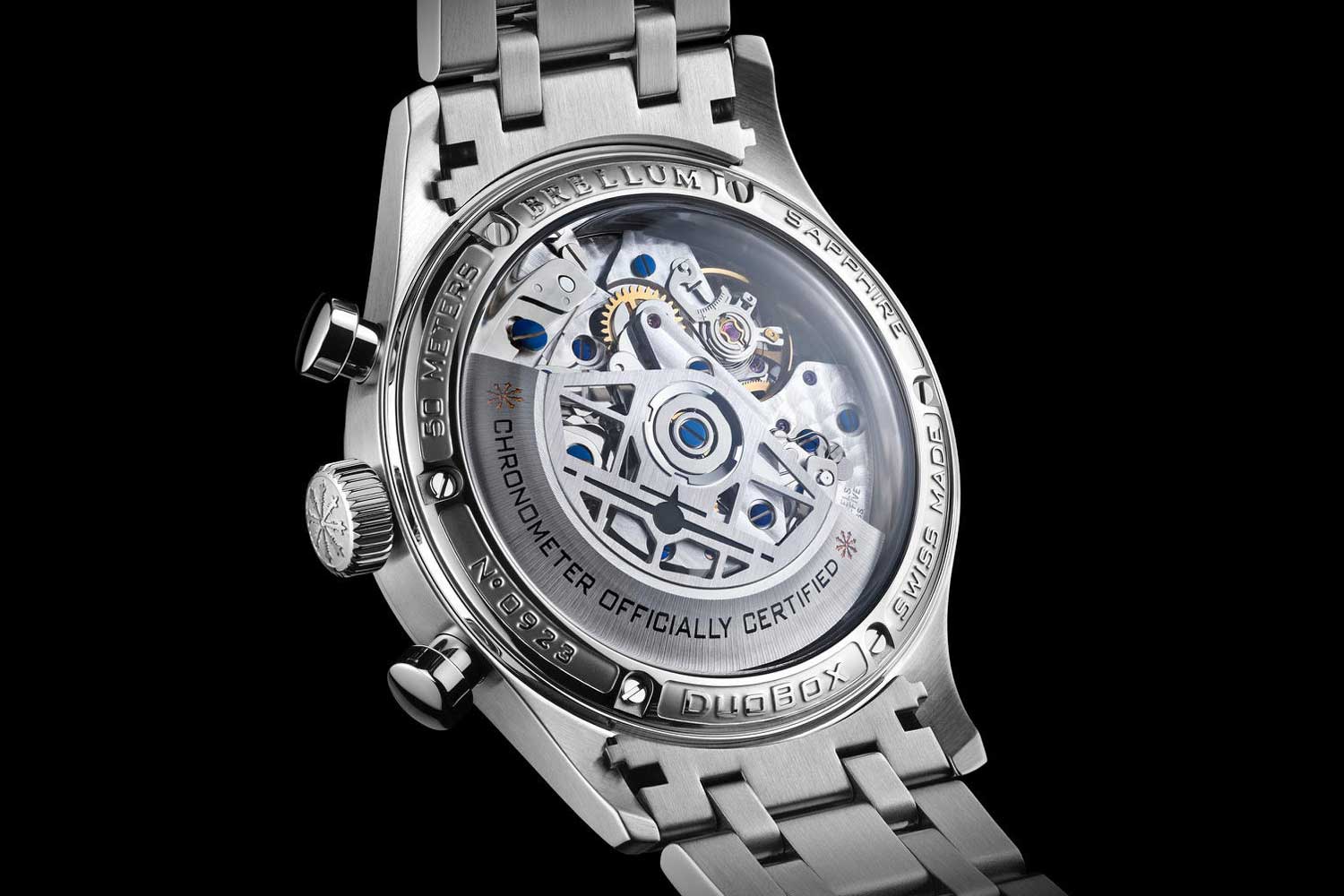
From the elegant engraving around the caseback to the Wyvern-inspired carbuncle design on the crown, there is a sense of thoughtful design to this pilot’s watch.
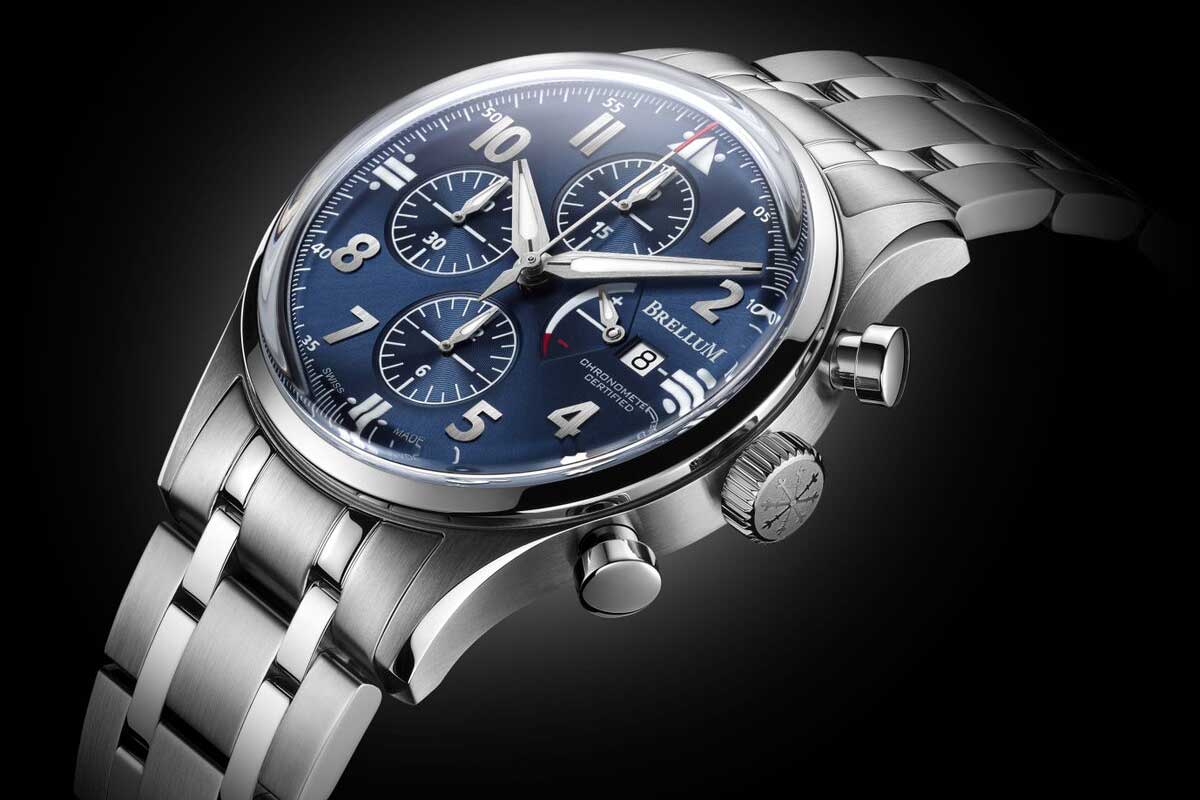
From the elegant engraving around the caseback to the Wyvern-inspired carbuncle design on the crown, there is a sense of thoughtful design to this pilot’s watch.
From the elegant engraving around the back of the case to the Wyvern-inspired carbuncle design on the crown, there is a sense of thoughtful design and attention to detail for every inch of this pilot’s watch.
Retail Price: CHF 3,110 on strap; CHF 3,220 on bracelet
Archimede Trikompax Flieger Chronograph
Since 1924, Ickler manufactures premium quality watches and watch cases, made to the highest quality standards in Pforzheim, Germany, for a demanding international clientele. In 2003, Ickler decided to branch out into watchmaking with its first brand, Archimede.
Archimede gained popularity with online watch forums for their quality entry-level flieger-inspired watches. The first Pilot Chronograph won recognition by German trade publication for its clean design. The Trikompax Flieger Chronograph builds on that design to showcase Ickler’s strengths beyond just case manufacturing.
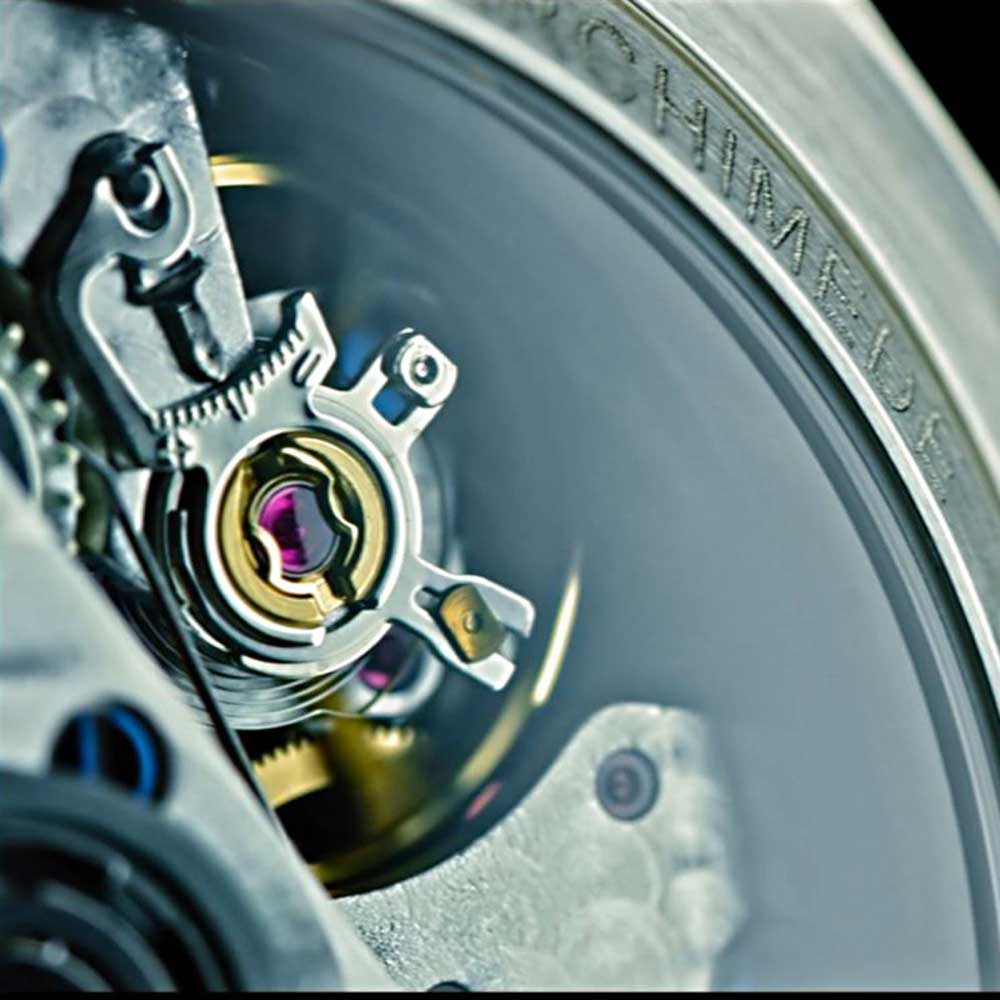
The Archimede Trikompax Flieger Chronograph is powered by the ETA/Valjoux 7753.
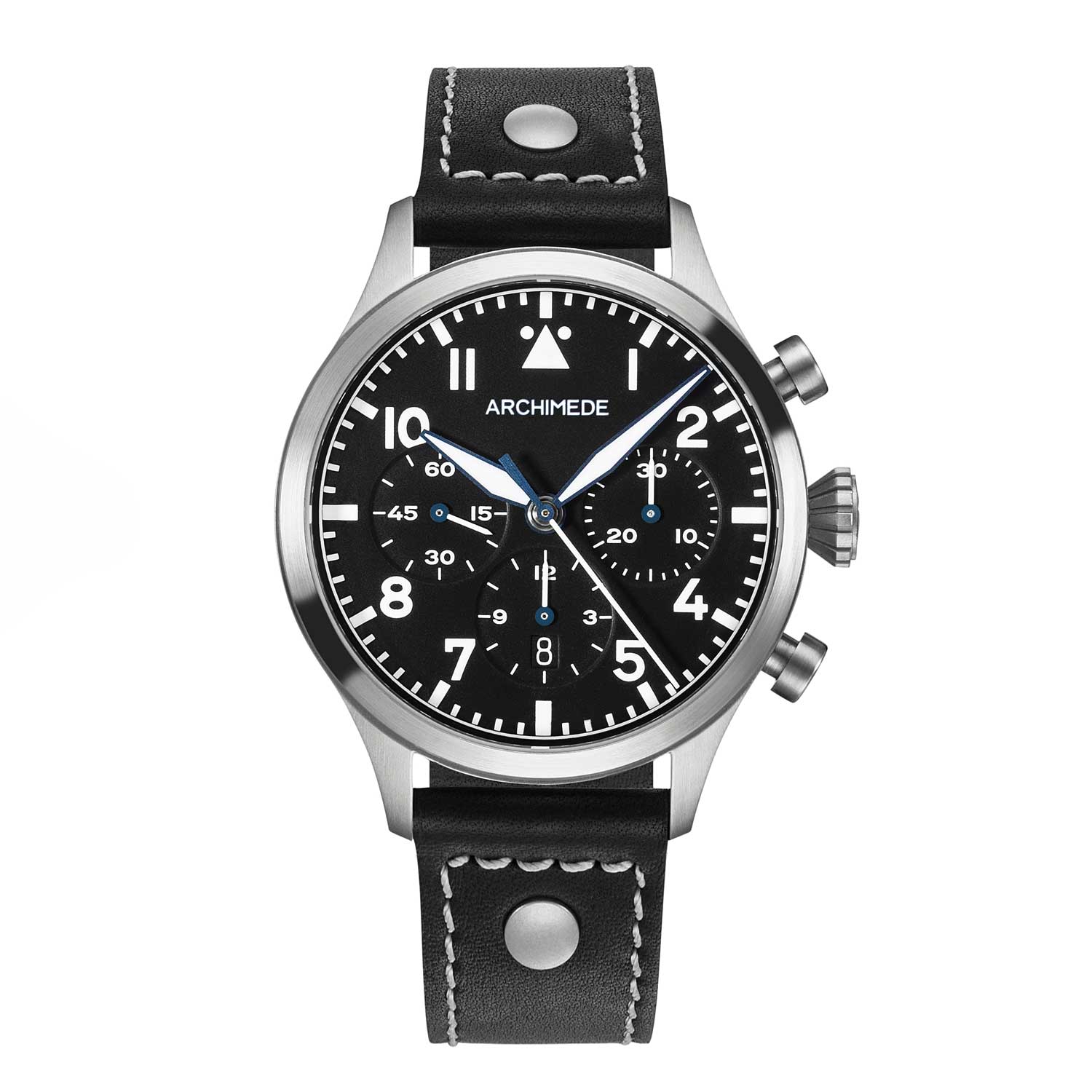
The watch is a modern interpretation of tri-compax, which is commonly referred to as the 3-6-9 layout.
The dial layout is well balanced with the brand name under 12 o’clock. The date remains at six o’clock but blends in perfectly in the chronograph hour sub-register. At first glance, what is striking are the blued hands made in the Ickler factory by the process of thermally heating the steel hands until they turn into a perfect deep blue colour.
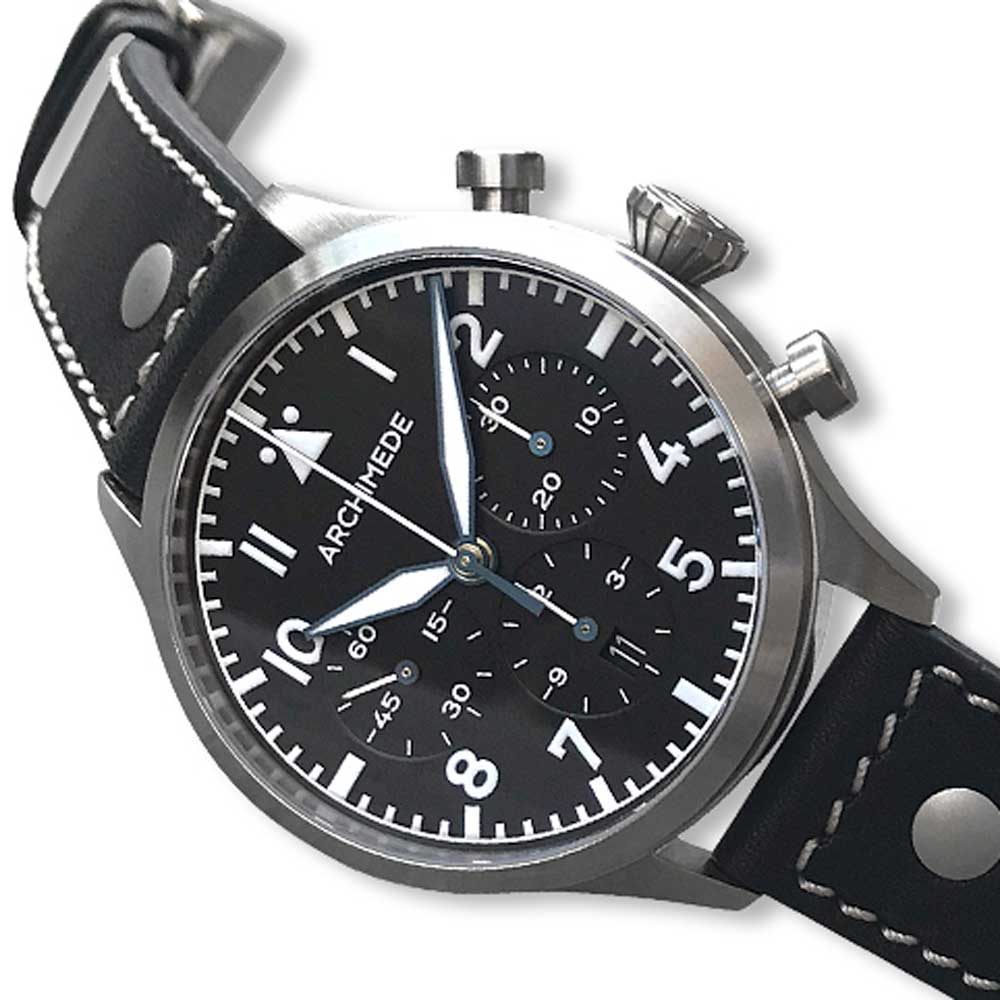
The dial layout is well balanced with the brand name under 12 o’clock and the date at six o’clock, which blends in perfectly in the chronograph hour sub-register.
Retail Price: Starting from EUR 2,460
Fortis Flieger F-43 Bicompax
Fortis, under new management after Jupp Philipp purchased the company in 2018, has released the first glimpse of the future of the watch company with the Flieger F-43 Bicompax. It’s a reassuring look at what is to come with a modern pilot’s chronograph that is a natural progression of the brand’s cornerstone Flieger line.
The original Fortis Flieger was introduced in 1987 and has come to be a respected and trusted line of pilot’s watches. They are functional, reliable and bring a modern flare to the traditional styling of most serious pilot’s watches. The F-43 Bicompax gets its name from the familiar dual-subdial complication, and is available with a three-link Oyster-style bracelet with a quick-adjust slide-clasp, or a black-grained vegetable tanned natural leather strap fitted with a pin buckle.
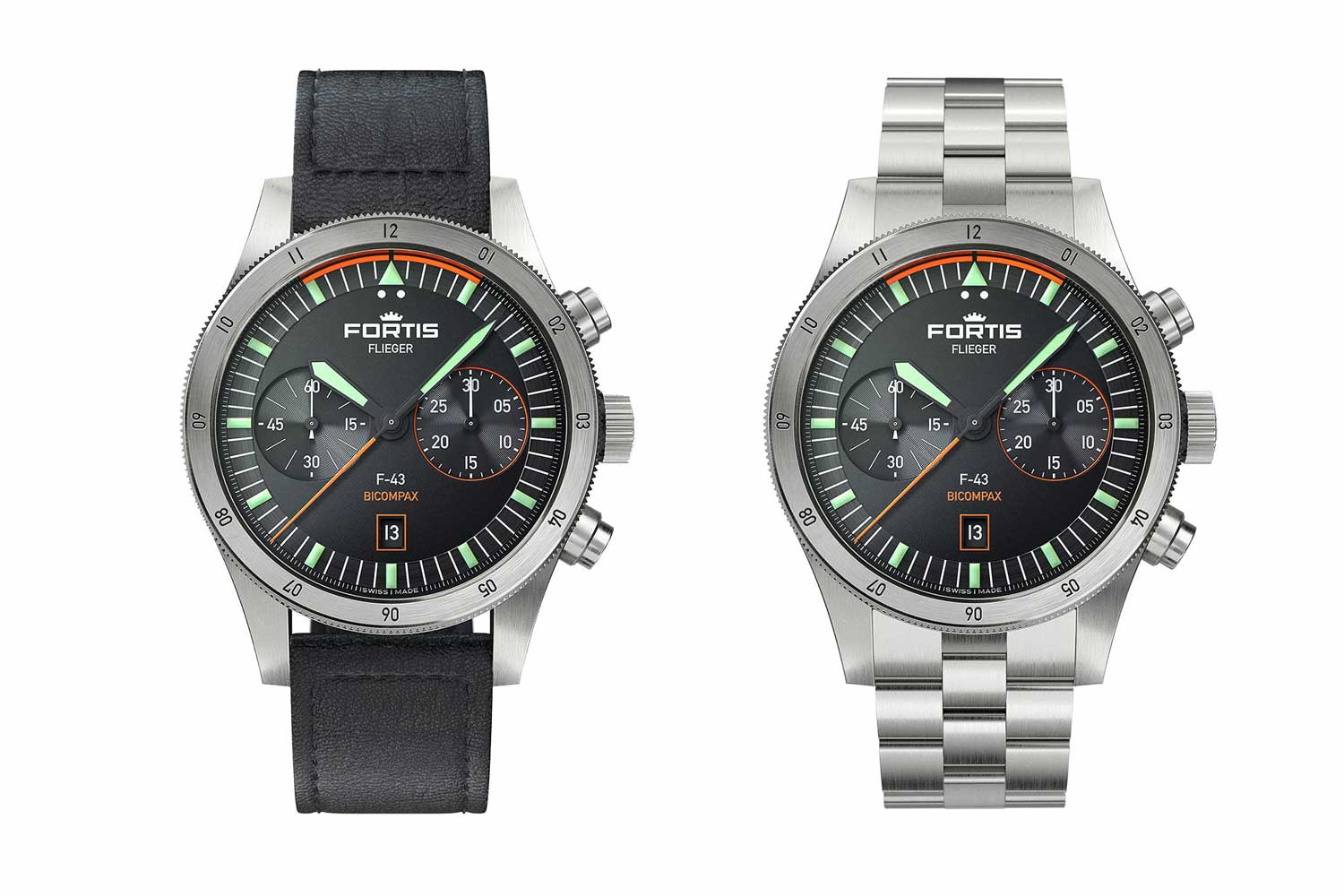
The F-43 Bicompax is available with a three-link Oyster-style bracelet or a black-grained vegetable tanned natural leather strap fitted with a pin buckle.
Fortis have added another original feature they call the “Synchroline”. This is a streak of fluor orange on the dial above the 55 to 05 seconds indexes. The purpose is to allow multiple pilots flying in squadron formation to synchronise within a five-second range when adjusting time or starting the chronograph.
There are two subdials, a seconds counter recessed at nine o’clock and a 30-minute chronograph rimmed in Berlac Fluor orange at three o’clock, arranged with nice symmetry and minimal design. A date indicator sits at six o’clock and is bound by orange, a slight breach of the strict colour coding by chronograph function, to visually balance the Synchroline along the top of the dial.
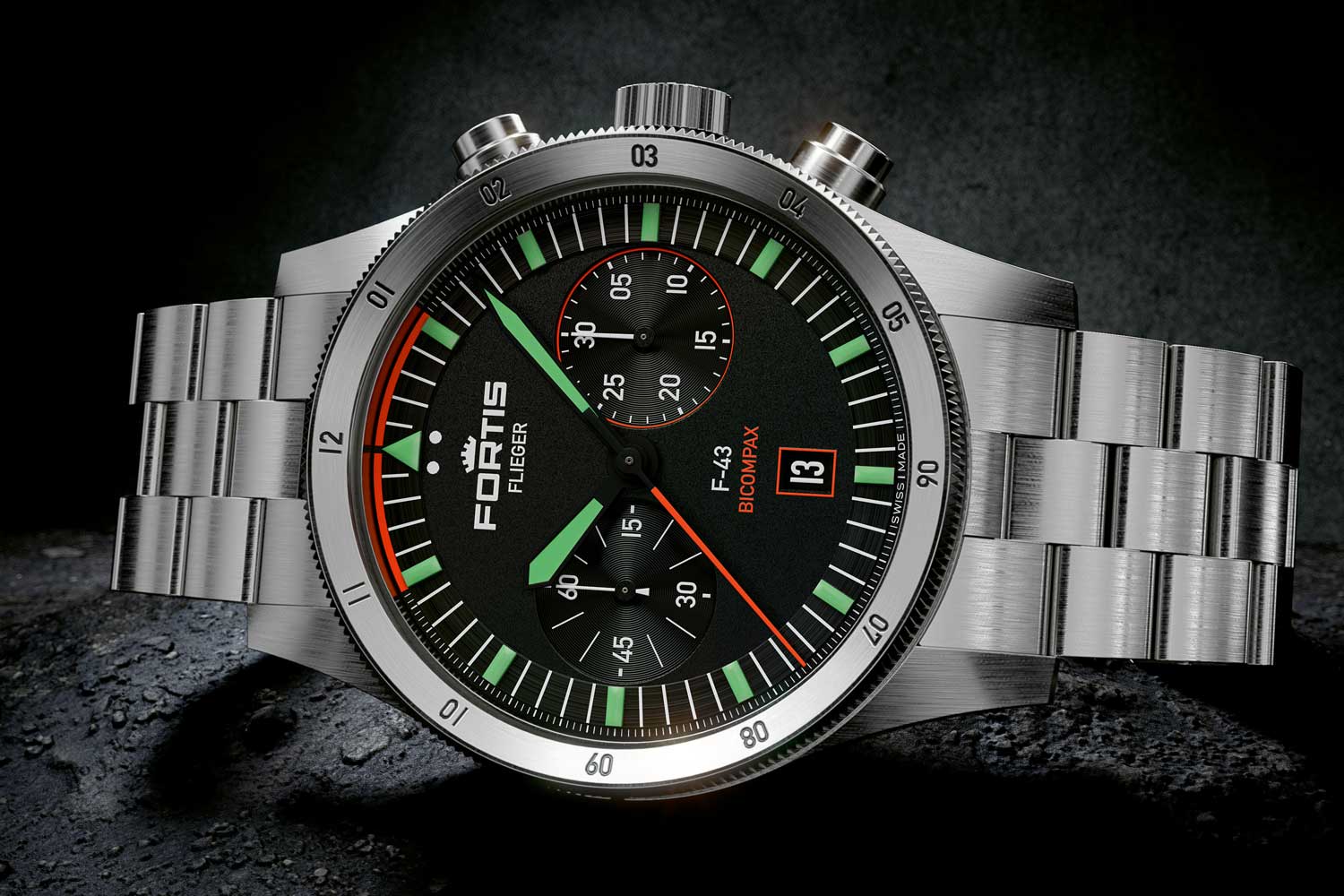
The watch is designed as per the patented Brixtrack system where an index track of green SuperLumiNova illuminates rectangles placed on a slightly raised ring around the dial for maximum legibility.
The 43mm case is brushed stainless steel, and the solid caseback is etched with an abstract propeller design. The screw-in caseback and crown allows for up to 200-metre water resistance in the case of a water landing, further attestation of Fortis’ thoughtful and utilitarian design.
The automatic chronograph movement is based on the Sellita SW510 calibre, which provides 48 hours of power reserve.
Retail Price: Starting from USD 3,120
Laco München
Laco, established in 1925, was one of the original five watch manufacturers commissioned to manufacture pilot’s watches in the 1940s for the German military. They’ve been creating flieger-style watches ever since, and the München is a standout model for their line of chronographs.
At first glance, the München has standard Type A aviator dial features, a three-hand time display of bright white on a black matte dial under a domed, anti-reflective sapphire crystal. Simple, effective and classic. Upon second glance, however, the grey-on-grey subdials of a 7750 Valjoux-based tri-compax chronograph reveals itself. It’s a neat trick performed effectively and is bound to be a conversation starter.
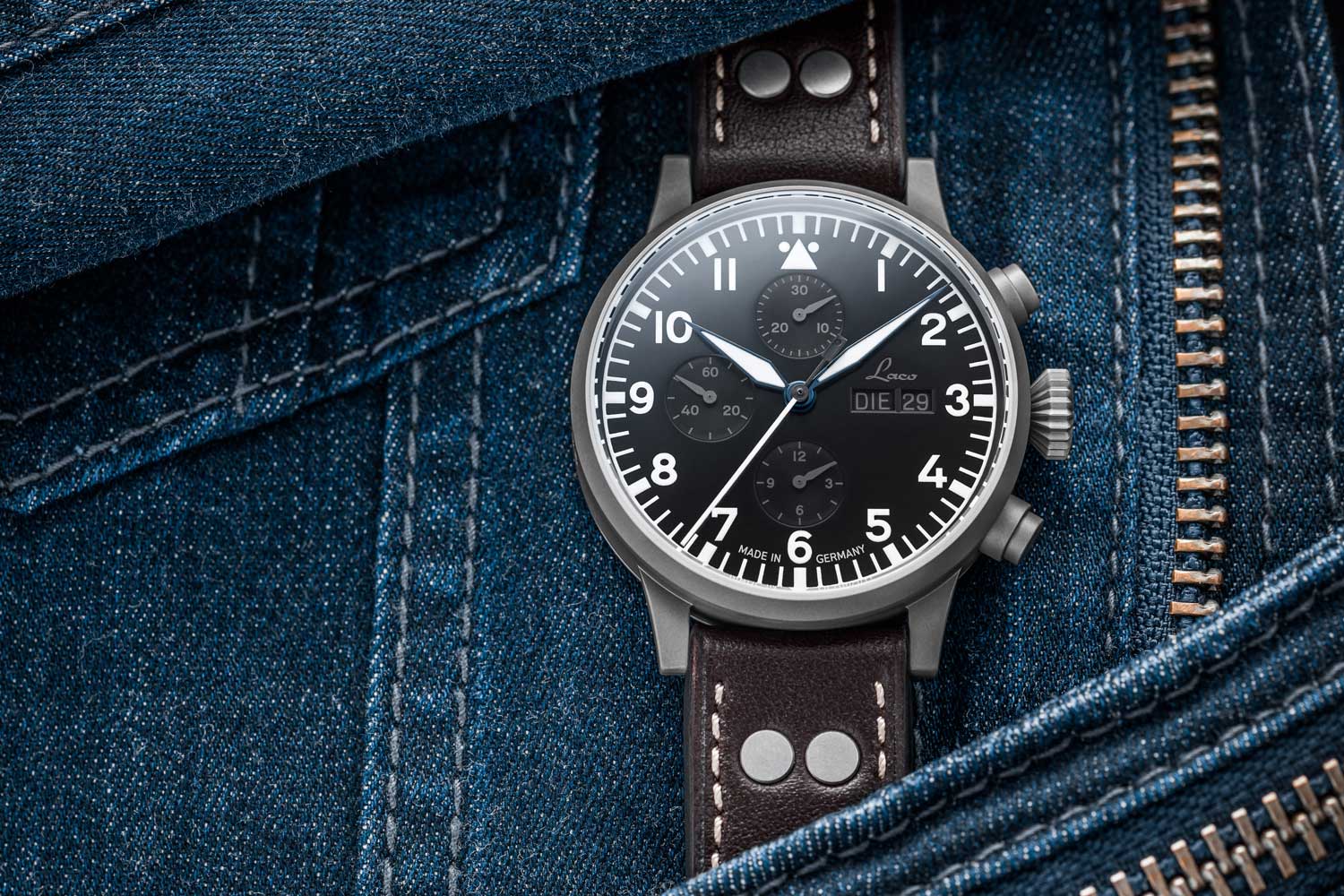
The Type A flieger display, oversized diamond crown and the two chronograph pushers give the München a classic flieger chronograph profile.
The subdials are printed in grey lettering with matching grey hands, making them appear to fade slightly into the black dial and giving them a clear secondary function. Like most ETA/Valjoux 7750-based designs, there is a continuous second at nine o’clock, a 30-minute chronograph subdial at 12 o’clock, and a 12-hour chronograph subdial at six o’clock. There is also a day and date complication feature paired well with the Laco logo, which is printed in the same subtle grey.
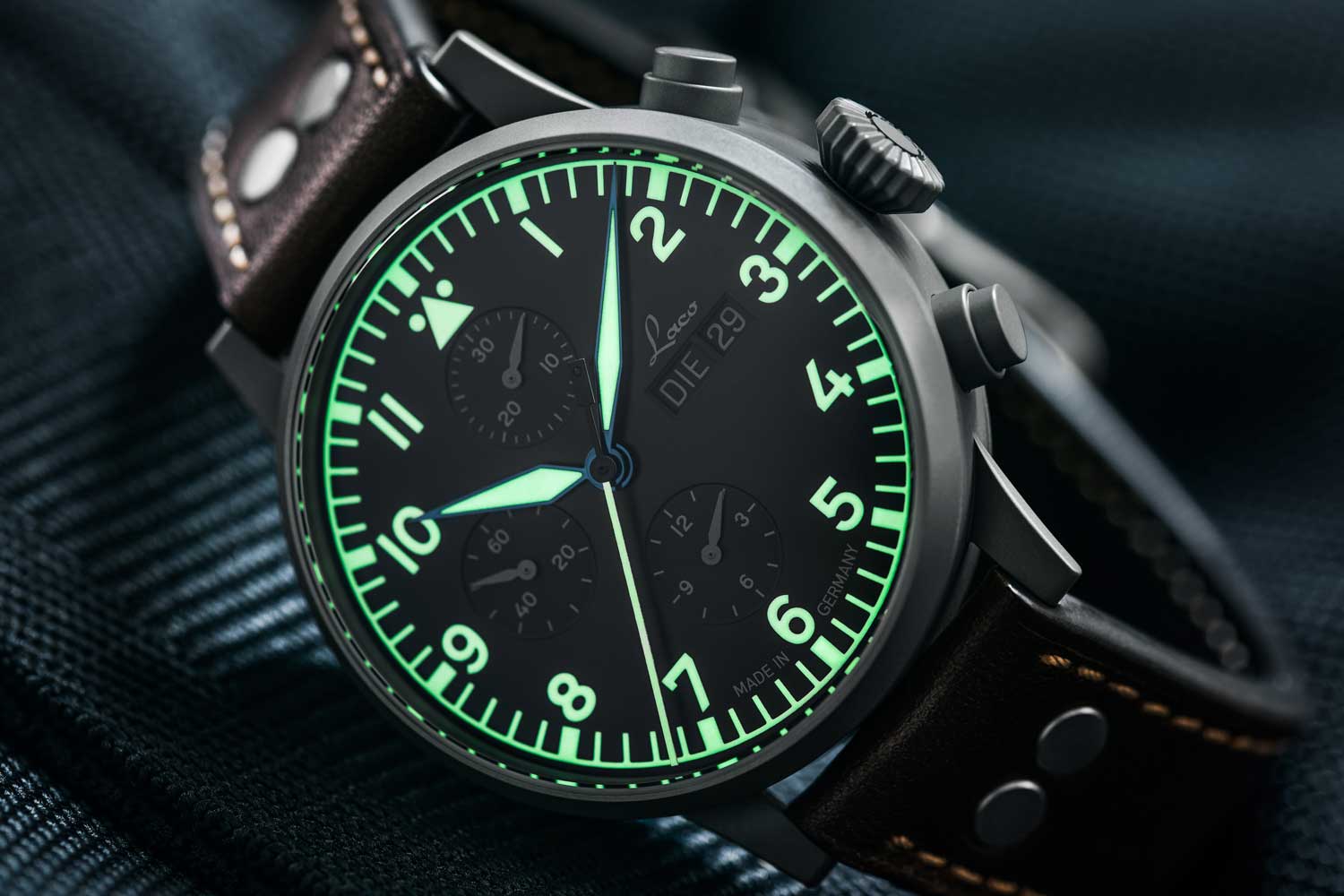
Limited to 200 pieces, the Laco München is based on the ETA/Valjoux 7750 and delivers a power reserve of 42 hours.
The Laco 50 chronograph movement is based on the ETA/Valjoux 7750, featuring 25 jewels, hacking seconds during time adjustment for precision. The case is waterproof to 100 metres and has a power reserve of 42 hours. The Laco München is a limited release of 200 pieces.
Retail Price: EUR 1,990
Stowa Flieger Classic Chronograph
Stowa, founded in 1927 by Walter Storz, and Jörg Schauer acquired the company in 1996 from Werner Storz, the successor and son of founder Walter Storz. As a trained watchmaker and designer, Jörg re-designed the historical Stowa pilot’s watches, in cooperation with Hartmut Esslinger, and moved the design element forward with the times. Stowa’s philosophy was that form follows emotion.
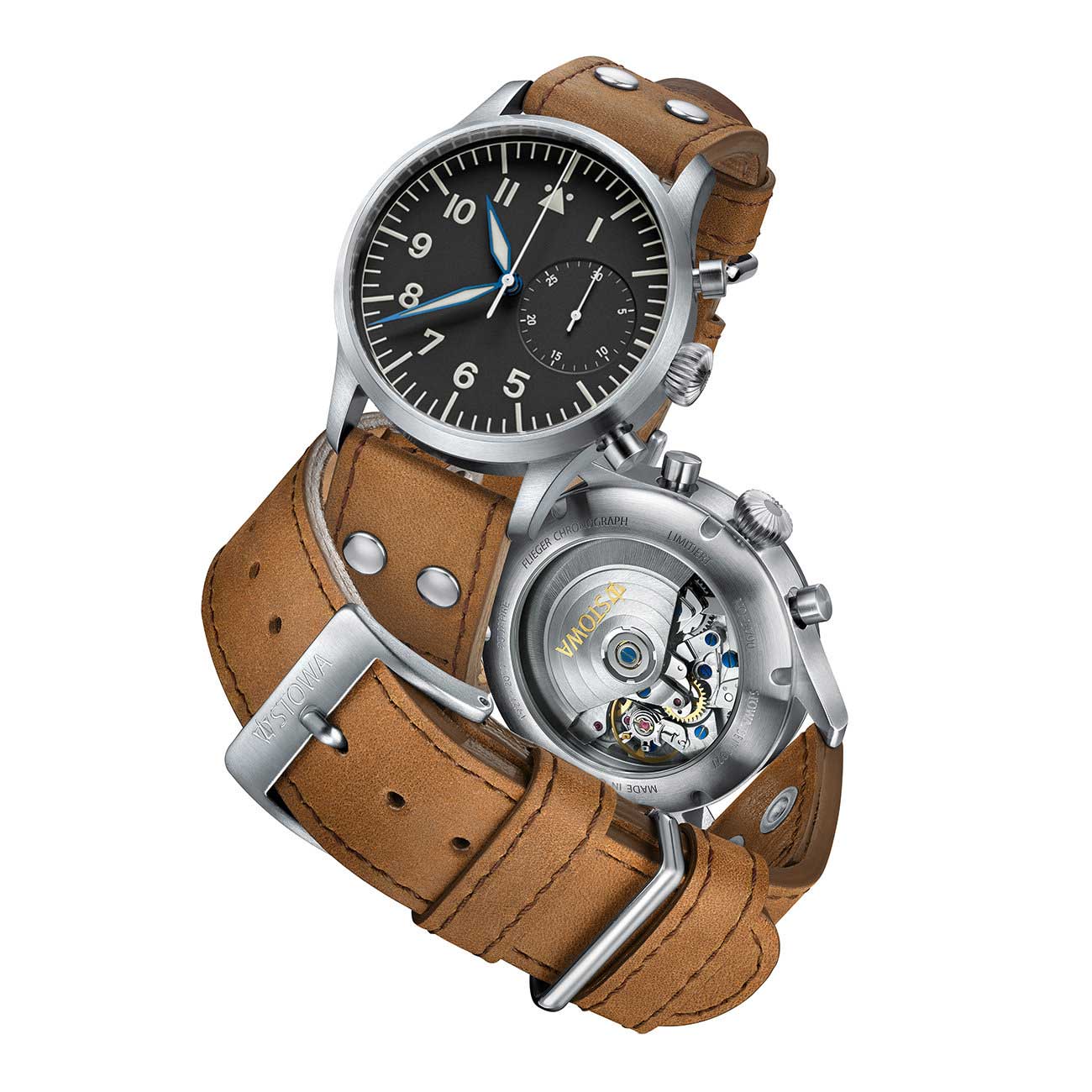
The Stowa Flieger Classic Chronograph borrows elements from the original 1940s flieger without any branding, and like the original, there is no running sub-seconds.
The Flieger Classic Chronograph’s dial is matte black for maximum contrast with the large numbers and indexes printed in white and coated with SuperLuminNova. The hands are the thermally blued steel featured in all Stowa pilot’s watches, and filled with Super LumiNova, creating an unobtrusive dial for day, low-light and night-time viewing. At the 12 o’clock position rests the classic triangle and two dots, designed for a pilot to quickly assess the upward orientation of the watch in the dark.
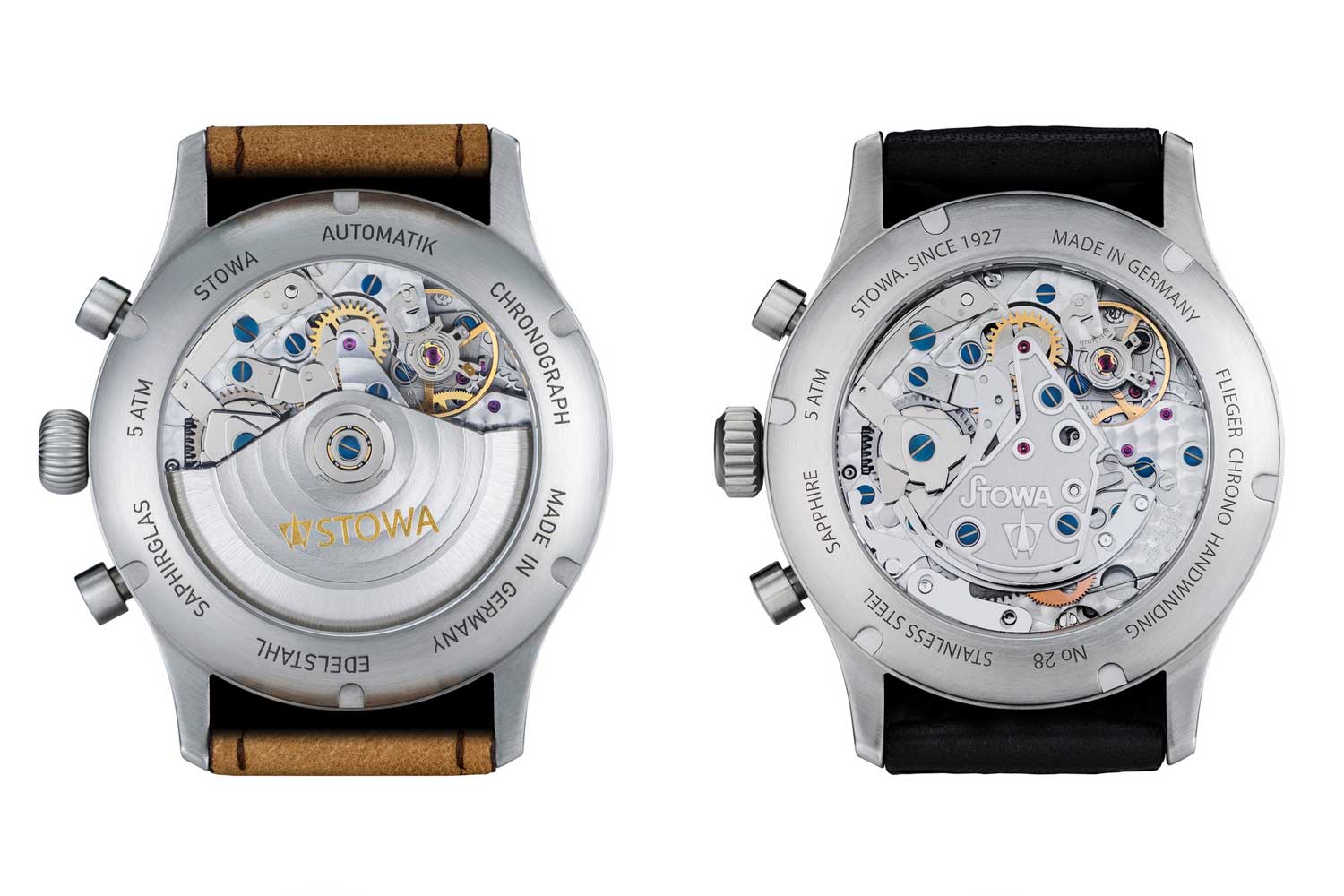
The contrast between sober dial and the surprise of the caseback is part of the joy of this flieger chronograph.
Inside the Stowa Flieger Classic Chronograph is either the ETA/Valjoux 7753 automatic movement, or a modified 7753 manual-winding movement. The movement is revealed under the domed sapphire display caseback, a beautiful and ornate counterpoint to the clean design of the dial. The contrast between sober dial and the surprise of the caseback is part of the joy of this flieger chronograph, especially with the manually wound option, that showcases the movement with a custom-engraved bridge.
Retail Price: EUR 2,200










